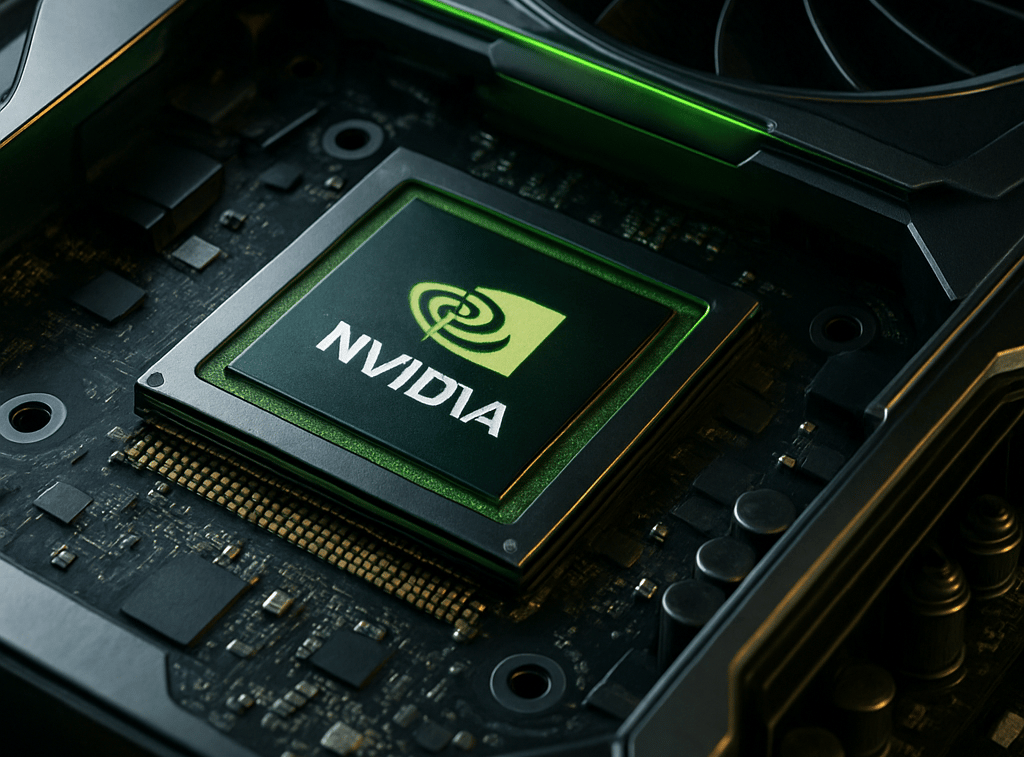Nvidia: How the chipmaker evolved from a gaming startup to an AI giant
Nvidia evolved from a gaming hardware startup to AI leader, achieving a $3.3 trillion market cap, pioneering GPUs, and facing legal, geopolitical, and supply challenges amid global AI market growth.
TECH INFRASTRUCTURELLMARTIFICIAL INTELLIGENCETECHNOLOGY
Eric Sanders
6/22/20253 min read


Nvidia's Remarkable Journey: From Gaming Startup to AI Powerhouse
In the fast-paced world of technology, few companies have transformed themselves as profoundly as Nvidia. What began as a modest gaming hardware startup has evolved into one of the most valuable and influential players in the global technology landscape. Today, Nvidia stands at the forefront of artificial intelligence innovation, boasting a staggering market capitalization of $3.3 trillion. This extraordinary rise reflects not just the company’s visionary leadership and technological breakthroughs, but also the broader seismic shifts reshaping the tech world.
The Humble Beginnings: Gaming Hardware Pioneer
Founded in 1993, Nvidia initially set its sights on the gaming market, specifically, creating graphics processing units (GPUs) that could deliver stunning visual experiences for PC gamers. At a time when gaming was beginning to move beyond simple 2D graphics into immersive 3D environments, Nvidia’s early innovations were critical. The company introduced groundbreaking GPU architectures that significantly improved rendering speeds and graphics quality.
Nvidia’s focus on gaming wasn’t just about entertainment; it was about pushing the boundaries of what processors could do. The company’s GPUs accelerated more than just visual effects – they pioneered parallel processing techniques that would later become foundational in a range of applications far beyond gaming.
Pioneering GPUs: The Heart of AI Innovation
As Nvidia’s GPUs matured, they found new life far beyond the realm of video games. The parallel processing power that made GPUs exceptional for graphics also turned out to be ideal for the kinds of calculations central to artificial intelligence and machine learning. This realization came at a pivotal moment when AI began to take off as a transformative technology in multiple industries.
Nvidia capitalized on this by developing CUDA, a platform that allows developers to harness the power of GPUs for general computing tasks. This innovation effectively turned Nvidia’s hardware into the backbone of modern AI research and applications.
By providing the essential processing capabilities needed for large-scale AI models, Nvidia became indispensable to tech giants, startups, and research institutions alike. The company’s chips fuel everything from autonomous vehicles and natural language processing to medical diagnostics and scientific simulations.
Achieving Unprecedented Market Value
Nvidia’s successful pivot from gaming to AI is reflected in its market valuation. With a market cap reaching an astonishing $3.3 trillion, Nvidia is now one of the most valuable technology companies in the world. This milestone underscores the central role the company plays in shaping the future of computing.
Several factors have contributed to this phenomenal growth:
AI Adoption: The explosion in AI applications has dramatically increased demand for Nvidia’s GPUs.
Technological Leadership: Constant innovation keeps Nvidia ahead of competitors in GPU performance.
Strategic Partnerships: Collaborations with major cloud providers, automotive companies, and research institutions bolster its ecosystem.
Diverse Applications: Beyond gaming and AI, Nvidia ventures into data centers, edge computing, and even robotics.
Legal, Geopolitical, and Supply Chain Issues
Despite its remarkable success, Nvidia faces significant challenges that test its resilience and strategic acumen. The company operates in a complex global environment marked by legal disputes, geopolitical tensions, and supply chain constraints.
Legal Battle: Nvidia has been involved in legal disputes that could impact its technology licensing and intellectual property.
Geopolitical Concerns: Trade restrictions and export controls, especially related to semiconductor technology, create risks in key markets like China.
Supply Chain: The global semiconductor shortage has strained production capacity, forcing Nvidia to prioritize certain product lines and customers.
Addressing these issues requires Nvidia to balance innovation with cautious diplomacy and operational agility. Its ability to manage these pressures will likely influence its trajectory in the years ahead.
Nvidia’s Evolution
Nvidia’s story offers valuable lessons for businesses and individuals navigating rapid technological change:
Adaptability is Key: Nvidia’s shift from gaming to AI shows the power of strategically pivoting to meet emerging market opportunities.
Invest in Core Strengths: By focusing on its expertise in GPU architecture and parallel processing, Nvidia built a foundation for long-term success.
Innovation Drives Leadership: Continuous investment in R&D and platform development helped Nvidia maintain its competitive edge.
Prepare for External Challenges: Legal, geopolitical, and supply issues are unavoidable in global business, resilience comes from proactive management.
Moreover, Nvidia’s trajectory exemplifies how technology companies can unlock new potential by applying existing innovations in novel ways. What started as a component for immersive gaming graphics became the engine behind some of the most advanced AI systems humanity has created.
Where Will Nvidia Go From Here?
As Nvidia continues to push the boundaries, it’s compelling to wonder about the next chapters in its journey. What new frontiers will this AI giant explore? How will it shape the balance of power in global technology and innovation? More personally, what lessons can entrepreneurs and tech enthusiasts draw from Nvidia’s blend of vision, innovation, and perseverance?
Nvidia’s evolution prompts us to consider: How can we harness innovation in our own lives and industries to not only adapt to change but to lead it? In a world where the pace of technological progress shows no signs of slowing, the story of Nvidia challenges us to ask, what role do we want to play in shaping the future?
Efficiency
Transform your workflows and reclaim your time.
Contact Us
Need A Custom Solutions? Lets connect!
eric.sanders@thedigiadvantagepro.com
772-228-1085
© 2025. All rights reserved.
